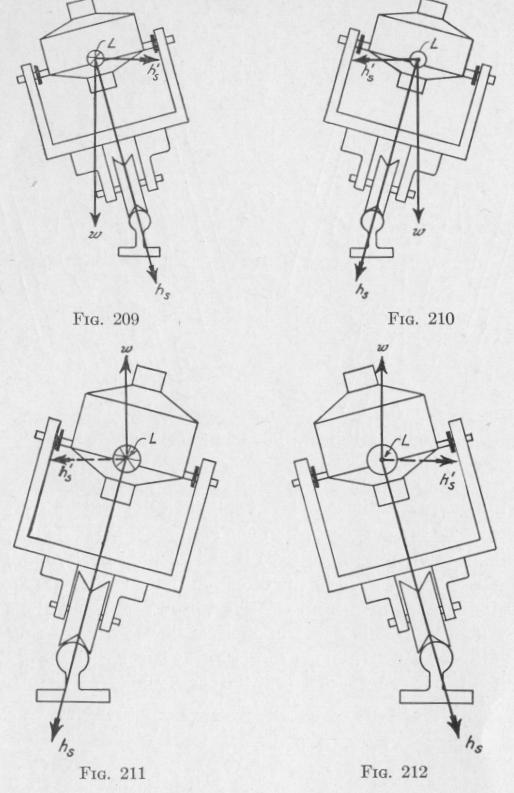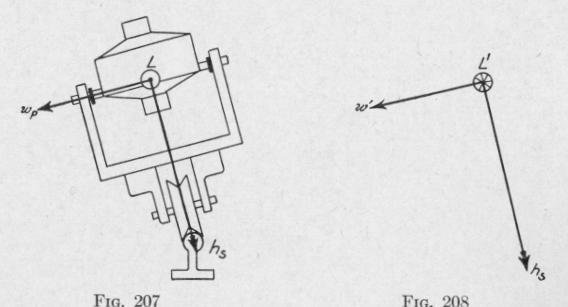262 GYROSCOPIC STABILIZATION GYROSCOPICALLY STABILIZED MONORAIL CARS 263
by the arrow wp. Suppose that the angular velocity of the spin- and making a left turn around a curve with center at the left
axle about the precession axis is accelerated on account of the hand side of the diagram. The angular velocity w of the car
static unstability of the gyroscope and that the increase in angular about the curve is in the opposite sense to the vertical compo
velocity of the gyro about the precession axis due to this cause is nent of the spin-velocity of the gyro. Following the method of
w', then there is a torque L', Fig. 208, tending to tilt the car toward
the center of the curve (Art. 36). This torque is due to the dis
placement of the center of gravity of the car and that of the gyro
scope from the vertical through the rail. If the gyro has a suffi-
ciently great angular momentum hs, the car will lean beyond the upright position toward the center of the curve.
The degree of kinetic stability of the car effected by the gyroscope depends upon the direction and magnitude of the velocity of the car around the curve. Figures 209 and 210 represent the car going away from the reader and making a right turn around a curve with center at the right-hand side of the diagram. Figure 209 represents the car tilting away from the center of the curve and Fig. 210 represents the car tilting toward the center of the curve. The angular velocity w of the car about the curve is in the same sense as the vertical component of the spin-velocity of the gyro. The component of the angular momentum of the gyro in the direction perpendicular to the axis of turning is hi'. When this component is turned with angular velocity w, a torque L acts on the gyro-wheel in the direction tending to rotate the spin-axle toward a vertical position (Art. 36). As the gyro cannot rotate about the axis of L independently of the car, this torque acts on
the car and opposes the tilting of the car from the vertical.
Figures 211 and 212 represent the car going away from the reader
the preceding paragraph, we arrive at the conclusion that in this case a torque acts on the car tending to increase the tilt from the vertical.
Thus it appears that a monorail car stabilized by a gyro-wheel

